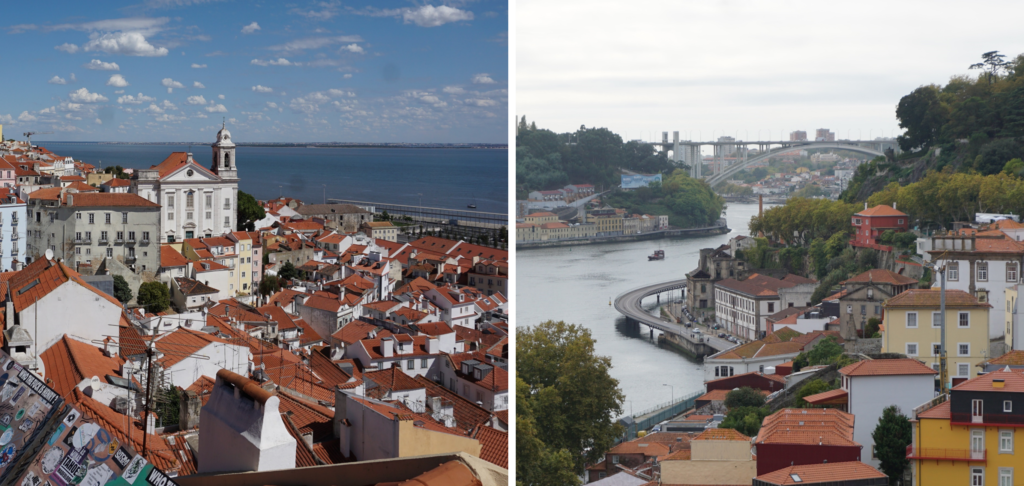It’s the Portugal predicament for travelers with limited vacation time: Lisbon or Porto? Both are great destinations for good food, wine and historic sites. To help make the decision, Stirring Up Adventure explores both cities.
The Cities
Lisbon sprawls across seven hillsides on the banks of the Tagus River. “What really stands out about Lisbon is the mix of architecture, and the nice blend of new and old in the city,” says Ricardo Hipólito, events and product manager for Cooltours. “There are medieval castles, convents and monasteries together with the modern downtown area that was completely rebuilt after 1755 earthquake.”
While getting around is made easier by the city’s famous cable cars and a few well-placed outdoor elevators, the steep hills are part of Lisbon’s charm. At the highest point is Saint George’s Castle, an 11th century military fortress and archeological site. It’s the best place for a panoramic view of the city and the 25th of April Bridge (inspired by California’s Golden Gate Bridge).
Portugal is home to a number of UNESCO World Heritage sites and you’ll find many of them in the Lisbon area. The list includes the Belém Tower, which was built in the 1500s and served as the gateway for Portuguese explorers, as well as the impressive Monastery of Saint Jerome.
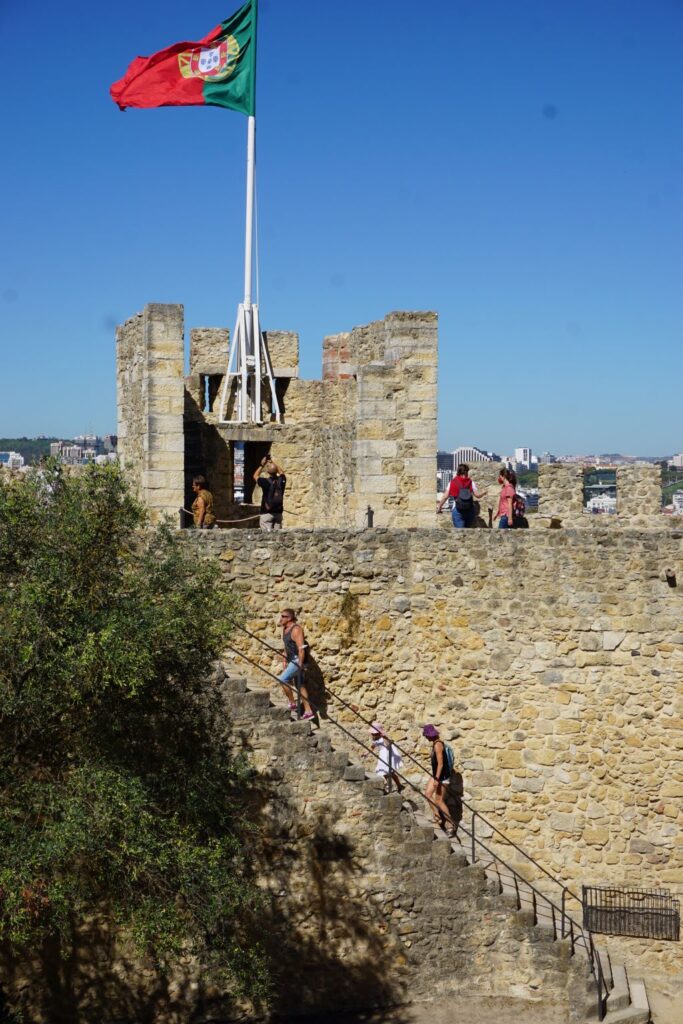
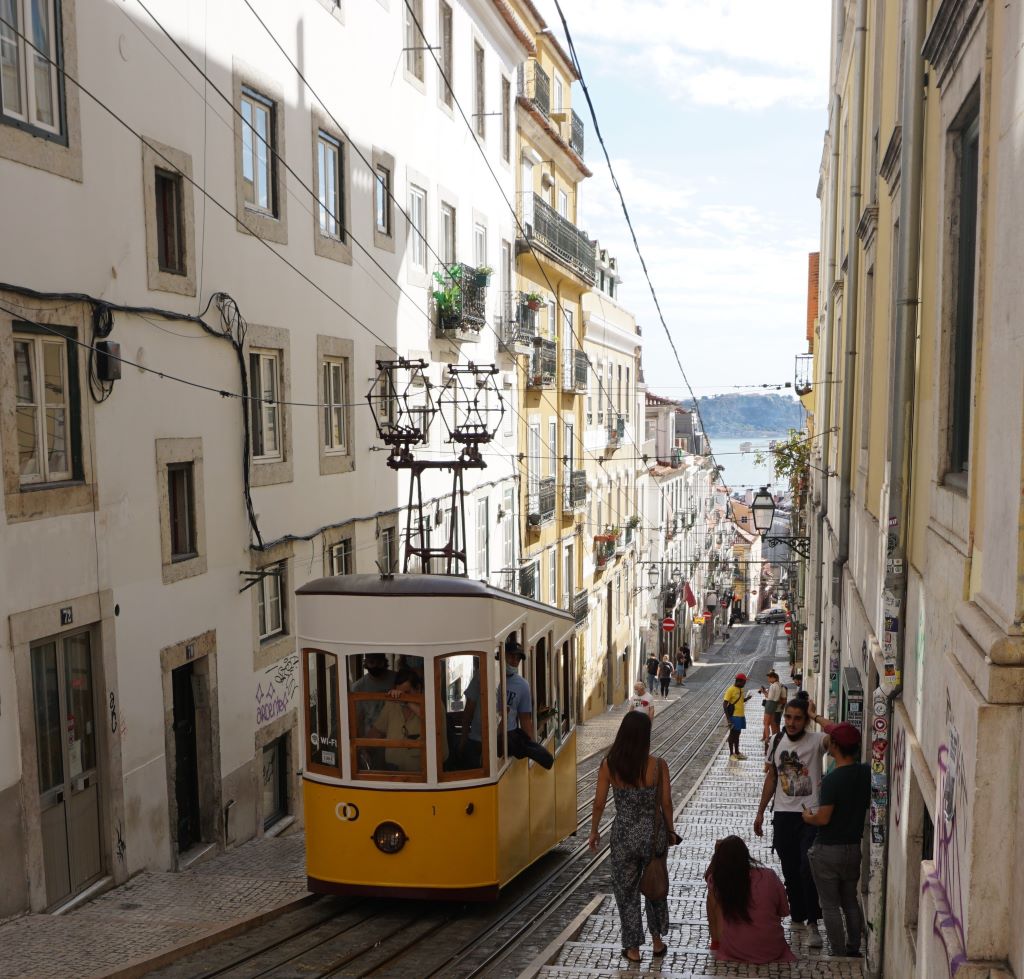
Porto is about a four-hour train ride north of Lisbon. It’s perched on a hillside above the Duoro River—so you won’t escape the hills—but it’s easier on pedestrians because many of the attractions are clustered in the historic center. Among the UNESCO World Heritage sites in Porto are the Ribiera district, the oldest neighborhood in the city, and beautiful Sao Bento Train Station, which features more than 20,000 of the iconic Portuguese blue and white azulejo tiles. Also in the historic center is Livraria Lello, billed as “the most beautiful bookstore in the world” and rumored to be the inspiration behind the Hogwarts library in JK Rowlings’ Harry Potter book series.
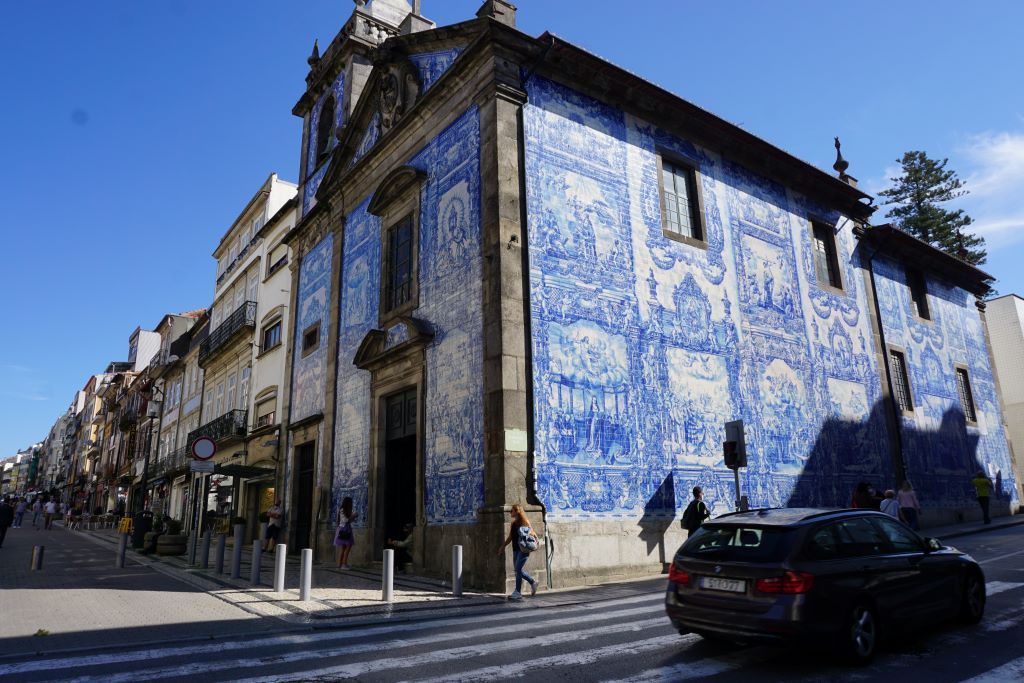
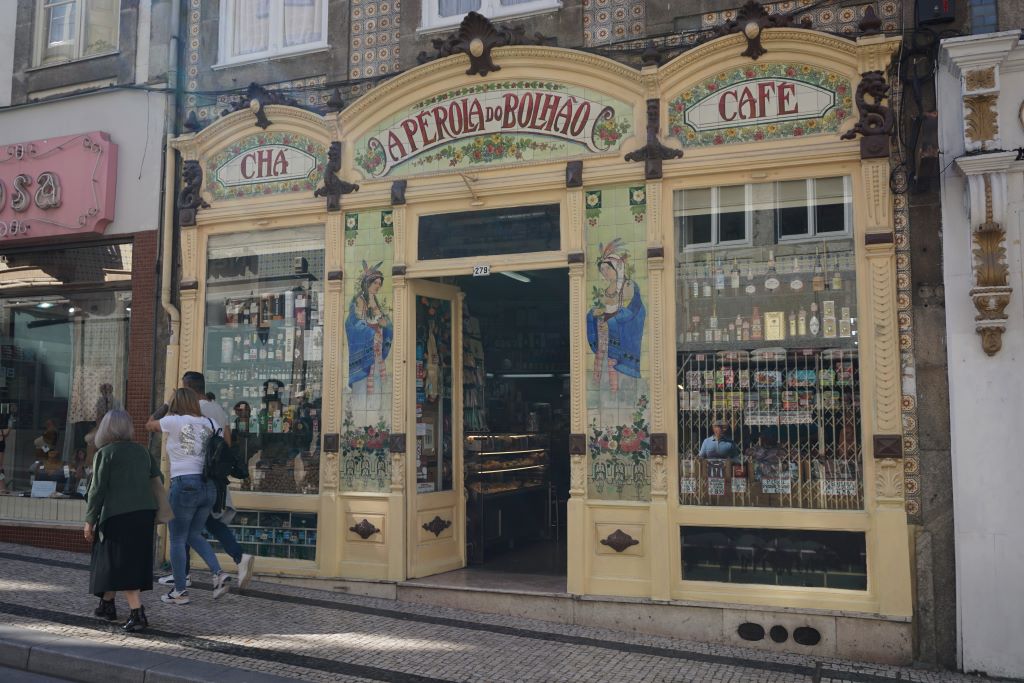
Visitors can sample several of Porto’s namesake port wine varieties in the famed wine lodges of Vila Nova de Gaia, just across the river.
Day Trips
There are a number of interesting day trips from both Lisbon and Porto. Pena Palace in Sintra is about a 45-minute drive from Lisbon. Built on the ruins of a 15th century monastery, the palace became the summer residence of the Portuguese royal family in the late 1800s. It’s hard to miss the castle’s eclectic red and yellow towers rising above the deep forest. Quinta da Regaleira in Sintra is also worth a visit for its lavish Romantic-era estate and whimsical grounds featuring lakes, tunnels and fountains.
Additional day trips from Lisbon include the medieval Almourol Castle on the Tagus River, and the stunning Convent of Christ in Tomar, which was founded in 1160 and served as headquarters for the Knights Templar in Portugal.
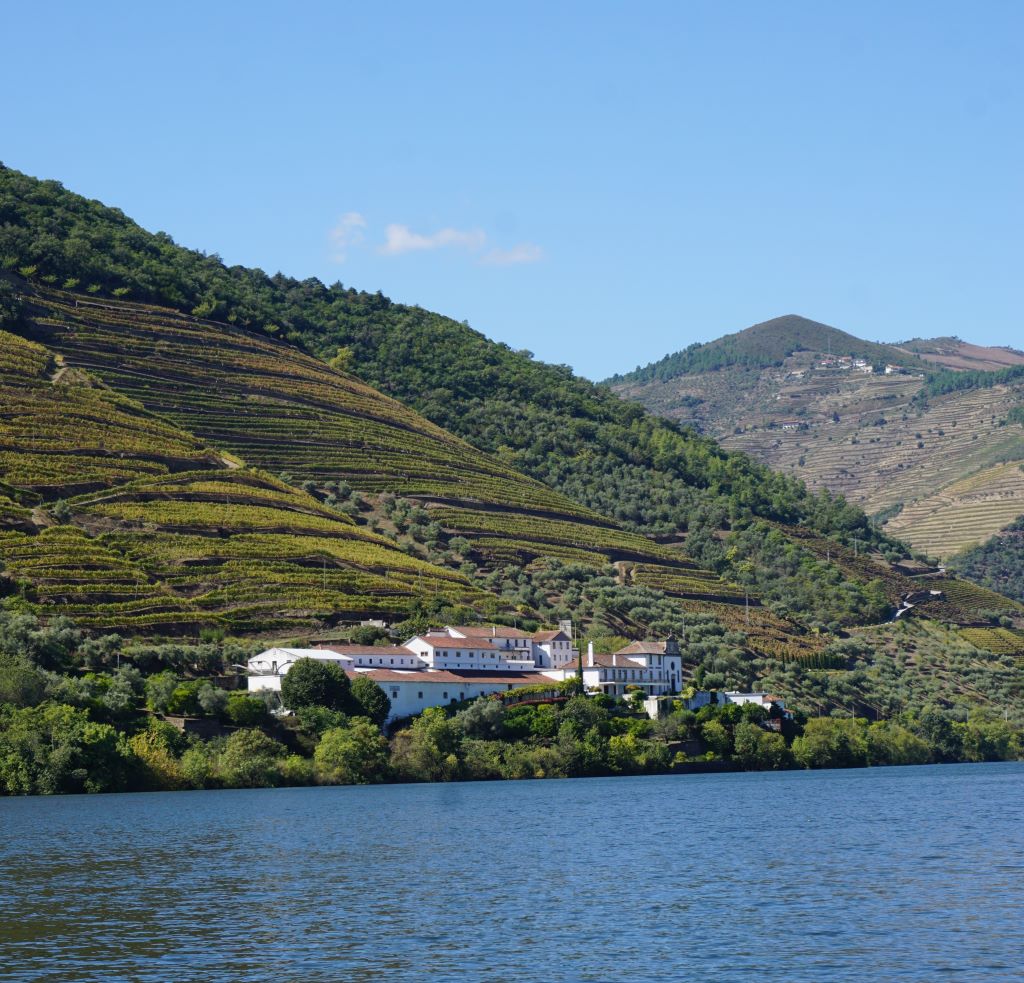
The Douro Valley, about 60 miles (97 kilometers) from Porto, is one of the most beautiful landscapes in the world. Hillsides braided with vineyards terrace down to the water’s edge. While there are several viewpoints along the river, the Douro is best experienced by boat. Be sure to leave time to visit one of the more than 200 quintas (wine estates) that offer tours and tastings in this unique wine region.
Food and Beverage
“If there’s something the Portuguese can be really proud of, and we are, it’s food,” says Ricardo. “Food is generally very good all over the country. If you are on the coast, it is more about fish and seafood. Inland, meat is the guest of honor.”
Portuguese specialties include cod served Lagareiro style with grilled with onions, garlic, olive oil and boiled potatoes, and the bifana, a sandwich of pork marinated in white wine, paprika, garlic, bay leaf, and vinegar.
In Lisbon, seek out the city’s famed pastel de nata tarts filled with eggy custard and dusted with cinnamon. Porto’s signature dish is the francesinha, a gut-busting sandwich made with layers of toasted bread, hot meat such as ham or roast beef, and sausage, topped with sliced cheese. A ladle of hot tomato-and-beer sauce is poured over top to melt the cheese. The entire sandwich is crowned with a fried egg.
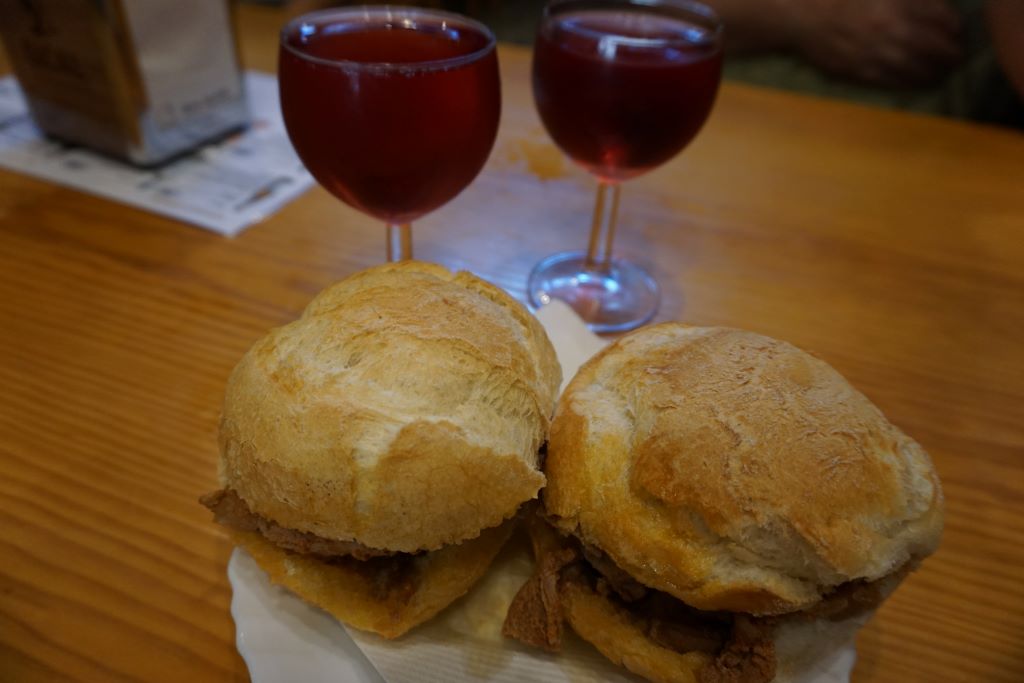
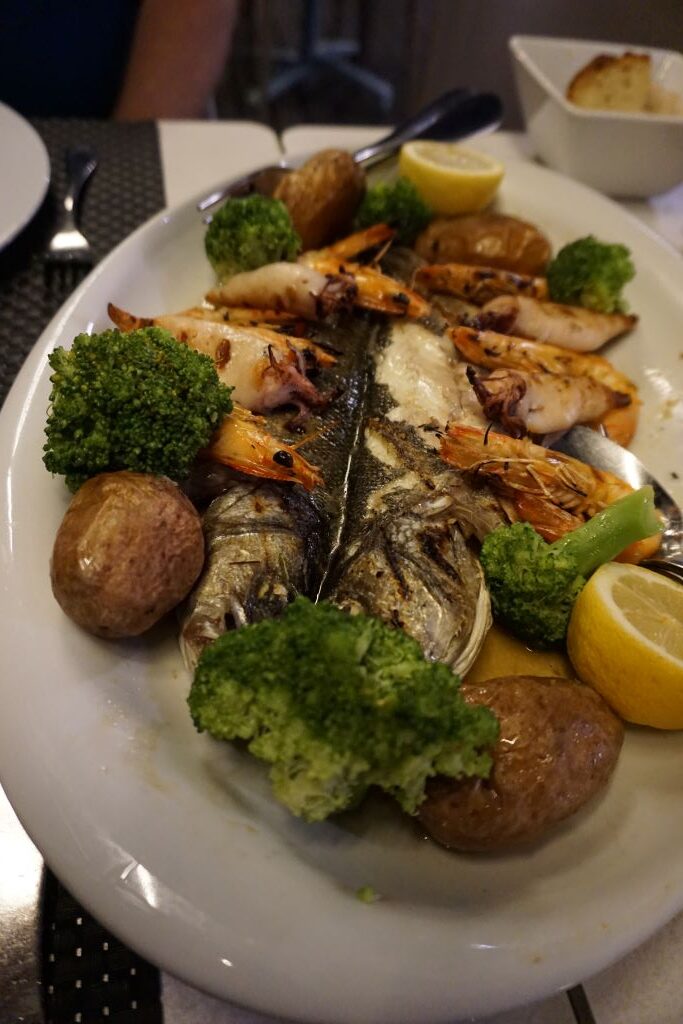
“As far as drinking, we have wine, beer, or even sangria, but there’s also the liquors,” says Ricardo. “Liquors are generally local specific alcoholic drinks that are made out of fruits that are popular or common around the different towns.”
In Lisbon, seek out ginja, a liqueur made by infusing sour cherries in alcohol with cloves, cinnamon or other spices. It’s often served in a small chocolate cup that can be eaten afterward. Porto’s namesake beverage—port—is wine fortified with brandy. Production began in the 17th century as a way for British merchants to preserve wine during its sea voyage from Portugal to England.
Portugal is one of the top 10 producers of wine in the world. With more than 250 indigenous grape varieties, visitors can find plenty of interesting wine options in both Lisbon and Porto. Be sure to try the unique vinho verde. Translated, it means “green wine,” but it refers to a young wine rather than the color. Vinho verde is light, crisp and fruity with a bit of effervescence.
With so many options for sightseeing, day trips, and great food and beverage, both Lisbon and Porto promise a memorable vacation. You can’t go wrong with either one!

